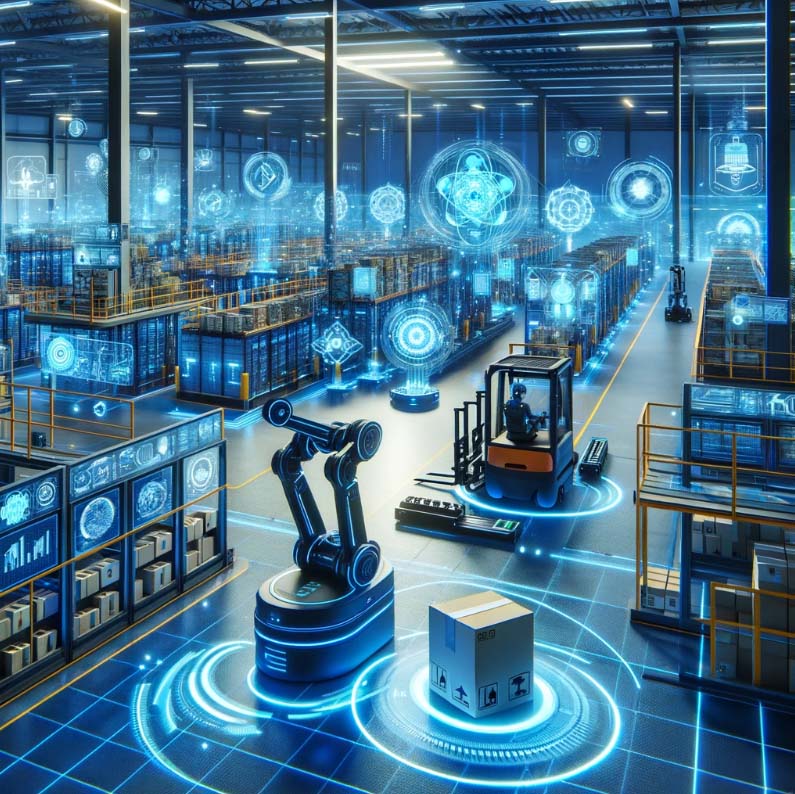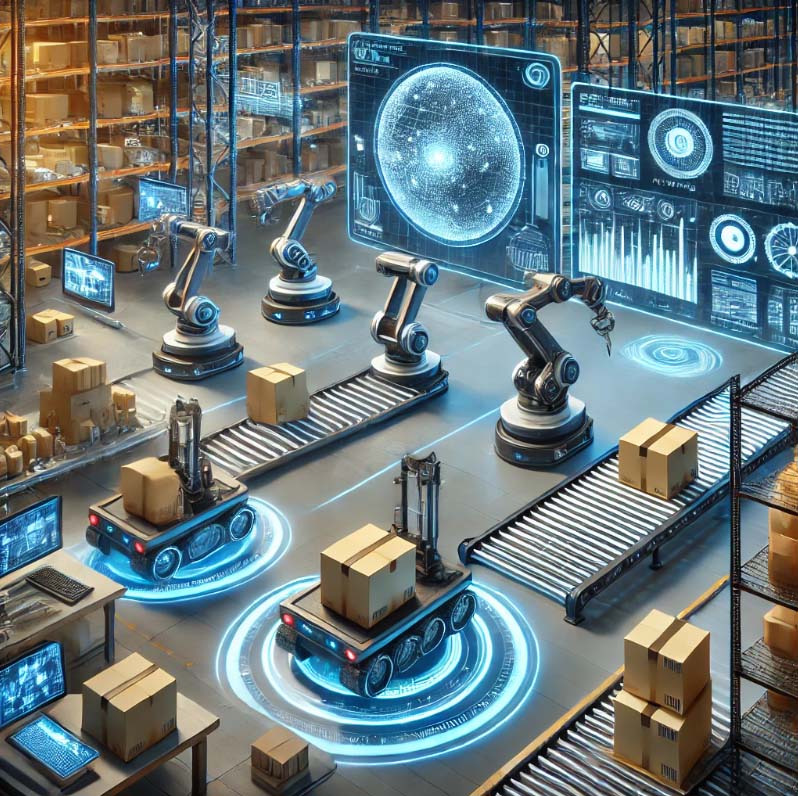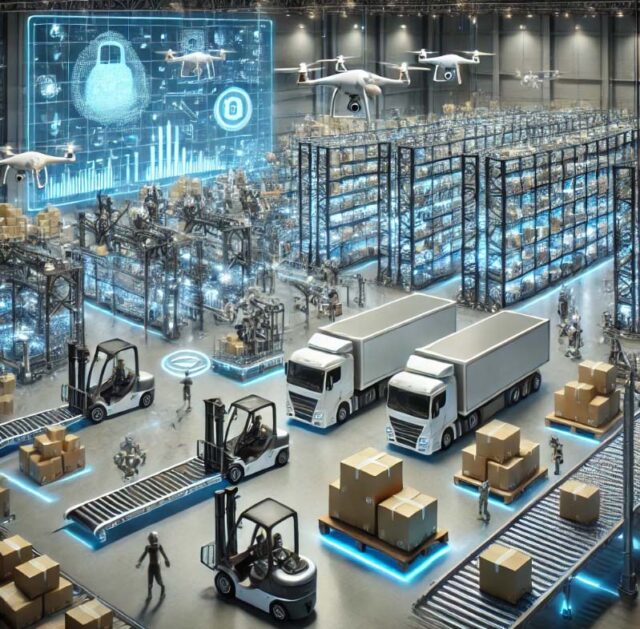Introduction: “Yesterday Godown, Today’s Smart Warehouse – Magic of Automation!”
10 years ago, there were only forklifts, manual labour, and paperwork in warehouses. Today? Robots pick up products from shelves, AI manages inventory, and drones check stock! Warehouse automation has become the superhero of the supply chain industry. But is this right for businesses? Will it replace employees’ jobs? And can small businesses afford it? In this blog, we will understand with practical examples, cost analysis, and future trends.
1. What is Warehouse Automation? Types, Technologies, and Real-World Use Cases

Simple Definition:
Warehouse automation means using technology (robots, AI, sensors) to automate manual tasks – like sorting inventory, packing products, or loading delivery trucks.
4 Types of Warehouse Automation:
- Bas1ic Automation
- Examples: Conveyor belts, and barcode scanners.
- Best For: Small businesses that want to increase speed.
- Advanced Robotics
- Example: AGVs (Automated Guided Vehicles) which move pallets.
- Real Case: 2 lakhs+ robots are working in Amazon’s warehouses!
- AI-Powered Systems
- Example: Machine Learning algorithms that predict demand.
- Real Case: DHL achieved 25% faster deliveries with AI.
- Full Automation (Lights-Out Warehouses)
- Example: Alibaba’s fully automated warehouse in China, where humans are zero!
2. 7 Biggest Benefits of Warehouse Automation (Numbers Don’t Lie!)

- 99% Accuracy: Robots do not make mistakes – no more wrong shipments!
- 24/7 Operations: Machines never stop – 3x productivity boost.
- 50% Cost Reduction: Labour costs are reduced in the long term.
- Space Optimization: Robots can use vertical storage – save 40% more space.
- Safer Workplaces: Forklift accidents are reduced by 90%.
- Faster Delivery: Zara packed online orders in 6 hours through automation!
- Scalability: Sudden demand on festivals? Robots can be handled easily.
3. Challenges & Myths: “Automation = Job Loss?” The biggest question!
Myth 1: “Robots will hurt by replacing employees”
- Truth: According to McKinsey’s report, automation will replace 30% of tasks by 2030. New jobs will be available – robot technicians, and data analysts.
Myth 2: “Only Big Companies Can Afford It”
- Truth: The starting cost of AGVs now starts from ₹10 lakh – accessible even for small warehouses.
Real Challenges:
High Initial Cost: Getting ROI may take 2-3 years.
Technical Glitches: Software bugs can halt operations.
Employee Resistance: Workers will have to learn new tech.
4. Top 5 Warehouse Automation Technologies to Watch in 2024
- AMRs (Autonomous Mobile Robots)
- Can move in any direction. Locus Robotics’ AMRs are used by Flipkart.
- Pick-and-Place Arms
- Even fragile items are lifted carefully with AI vision.
- Warehouse Management Systems (WMS)
- Cloud-based software that does real-time tracking.
- Drones for Inventory Checks
- Drones in Boeing warehouses can do 1 day’s work in 1 hour.
- IoT Sensors
By monitoring temperature and humidity, pharmaceuticals are kept safe.
5. Step-by-Step Guide: How to Automate Your Warehouse?
Step 1: Identify Pain Points
- Is there slow packing? Is inventory management messy?
Step 2: Budget Fix
- Start with basic automation (₹10-20 lakh).
Step 3: Choose Right Tools
- AMRs for e-commerce. Conveyor systems for manufacturing.
Step 4: Train the Employees
- Reduce donations from the pilot project.
Step 5: Monitor & Optimize
- Track performance with analytics tools.
6. Future of Warehouse Automation: What to Expect Till 2030?
- Cobots (Collaborative Robots): Will work together with humans.
- 5G Connectivity: Real-time data transfer will be 10x faster.
- Sustainability Focus: Solar-powered robots and recyclable packaging.
Conclusion: “Automate it smartly!”
Warehouse automation is a tool, not a goal. If your business is scalable, can train employees, and is within budget – then this could be a game-changer for you. Remember this: “Technology does not replace humans; it makes them better!”
Now take a small step – identify a problem in your warehouse, and see what technology is the solution. Go ahead, automate, and beat the competition!









